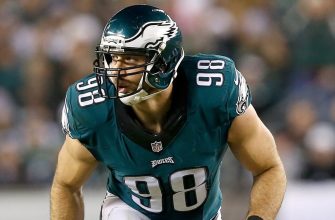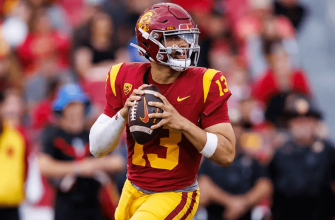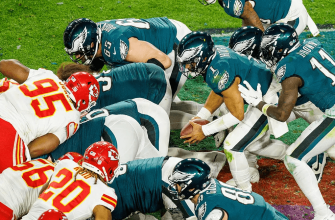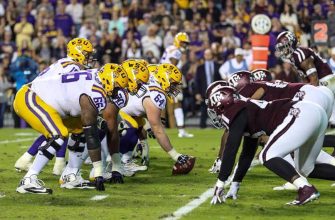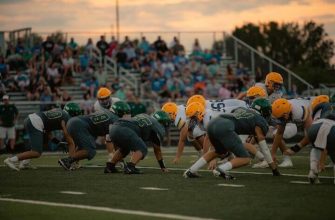The quarterback is the most important and visible player on a football team. Often referred to simply as the “QB”, the quarterback is considered the leader of the offensive squad and directs the attack on every play. Playing the position requires a rare combination of physical talent, mental acuity, leadership ability, and poise under pressure.
Quarterbacks are tasked with making split-second decisions to either hand the ball to a running back, pass it to a receiver, or run with it themselves based on their pre-snap reads of the defense. It’s an immensely difficult job that requires pinpoint accuracy when throwing, quick thinking to outwit defenders, mobility to avoid sacks, and extreme toughness to withstand big hits while exposing themselves to make a play. Fans and commentators endlessly debate the merits of quarterbacks based on statistics, championships won, individual awards, longevity, supporting cast, and ability to perform in crucial game situations.
This article will provide an in-depth look into football’s glamour position – the qualities and skills required to play quarterback at a high level, profiles of some of the greatest to ever play the position, analysis of quarterback scouting and development, and examination of strategies to defend against elite quarterbacks. Whether a casual fan or hardcore football junkie, reading this guide will give you a comprehensive understanding of the sport’s most recognizable and discussed position.
Role on the Team
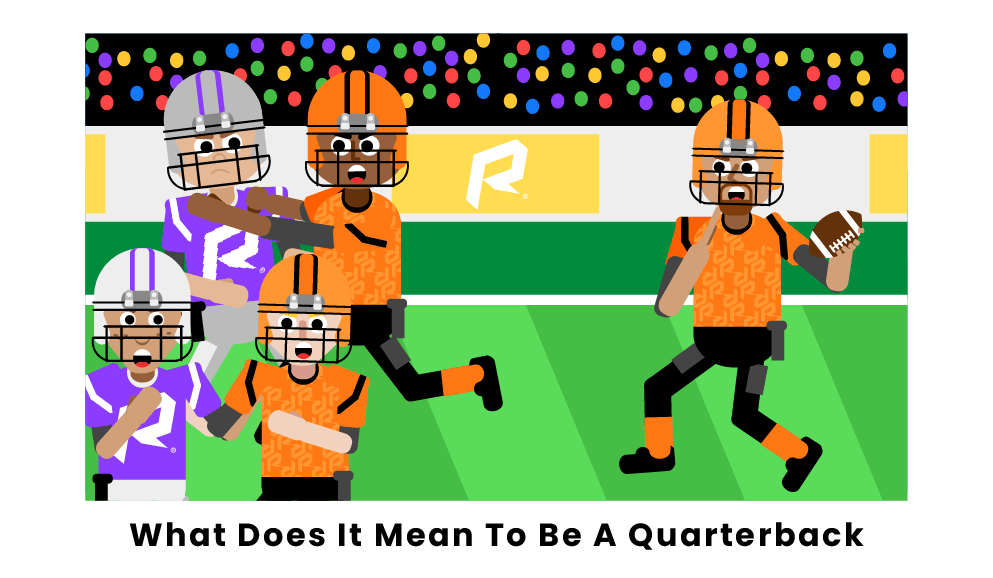
A quarterback is the offensive leader and one of the most important players on an American football team. The quarterback lines up directly behind the center and receives the snap to start each play.
The quarterback’s main role is to pass, hand off, or run the ball downfield in hopes of scoring or advancing the offense. On every play, the quarterback analyzes the defensive formation and coverage schemes to determine the best play to call. The quarterback calls out coded signals to communicate the play to the rest of the offense, making sure all players know their assignments. This requires strong leadership skills.
Once the ball is snapped, the quarterback may hand the ball to a running back to run upfield, or drop back to pass downfield to a receiver. When passing, the quarterback must read the defense and find the open receiver. Quarterbacks need to make quick decisions and deliver accurate throws under pressure. Elite quarterbacks can hit receivers more than 30 yards downfield. If no receivers are open, the quarterback may scramble and run the ball himself to gain yardage. Overall the quarterback orchestrates the offense and hopes to drive his team downfield into scoring position.
Skills Needed
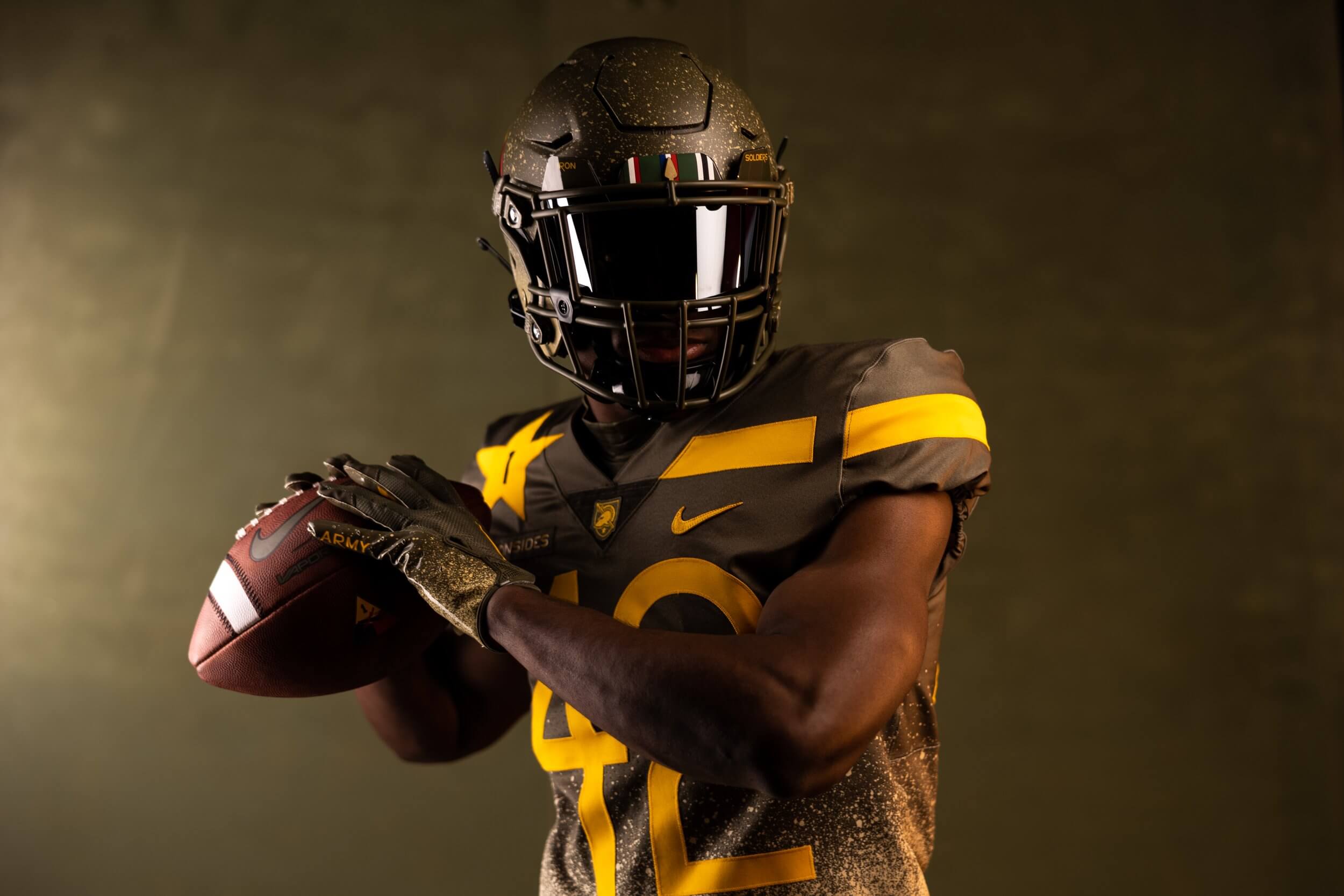
Being an effective NFL quarterback requires a rare combination of both physical talents and intangibles. While height and speed can be helpful, more important is having a strong throwing arm, pinpoint accuracy, quick decision-making skills, and standout leadership abilities.
Strong Arm: A quarterback’s throwing strength is crucial, as they need to be able to make every kind of pass with force and precision, from short outlet passes to deep bombs 50+ yards downfield. Elite NFL quarterbacks can throw the ball 60 mph or harder. Arm strength determines the velocity and distance of passes.
Accuracy: Accuracy is equally if not more important than arm strength. A quarterback must be able to deliver the ball exactly where it needs to go, sometimes threading tight windows between defenders. They need to master passing with touch, timing, and placement to hit receivers perfectly in stride.
Decision-Making: With defenses disguising coverages and blitzing, quarterbacks must read what’s unfolding after the snap and swiftly decide where to go with the ball. The best quarterbacks combine smarts with quick processing to exploit vulnerabilities in the defense.
Leadership: As field generals, quarterbacks must command the huddle, relay plays, adjust protection schemes, change routes if needed, and lead the offense. Their leadership sets the tone for the entire team. Quarterbacks need mental toughness, competitiveness, and a cohesive presence to inspire teammates.
Famous Quarterbacks
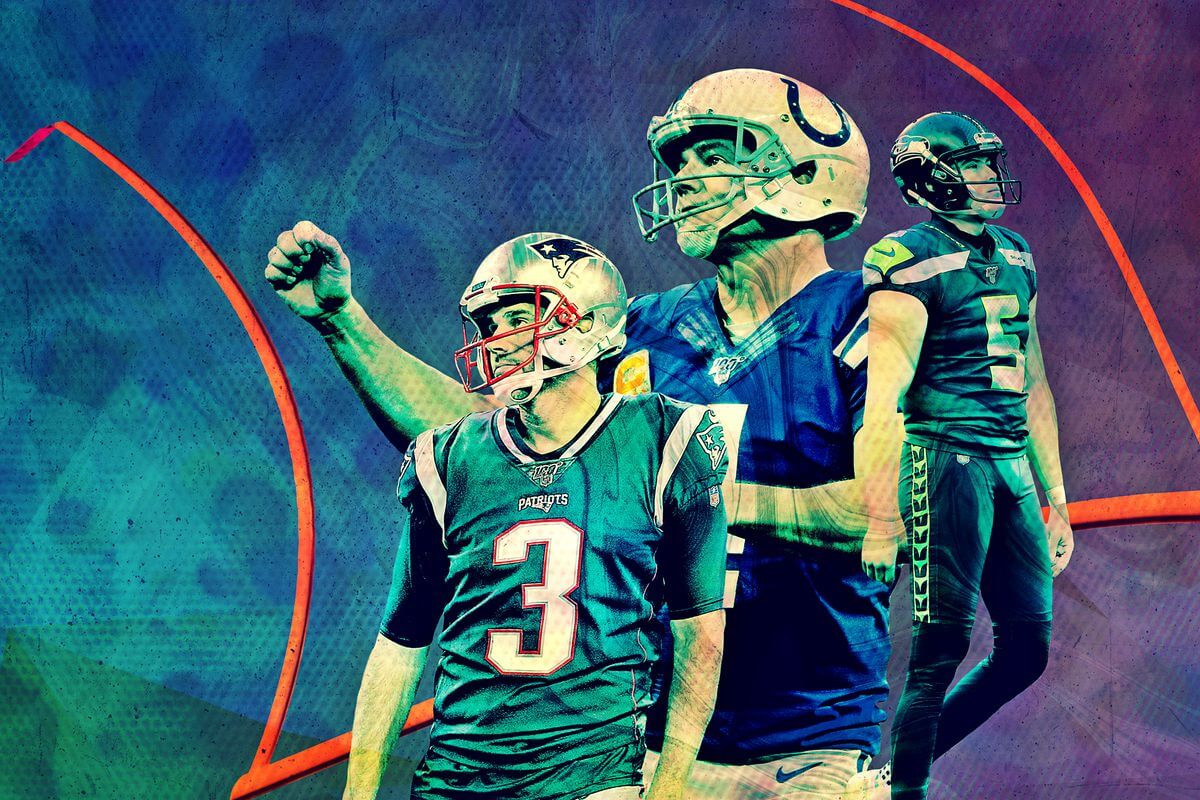
The quarterback position has been defined by many superstar players over the years that have left their mark on the game.
Here are some of the most famous and accomplished quarterbacks in NFL history:
Tom Brady – Brady is widely considered the greatest quarterback of all time. He has won 7 Super Bowls with the New England Patriots, the most ever by a single player. Brady is a 15-time Pro Bowler, 3-time All Pro, and 3-time MVP. His extensive accomplishments cement him as arguably the best to ever play the position.
Peyton Manning – Manning played 18 seasons primarily for the Indianapolis Colts and Denver Broncos. He is a 5-time MVP and Super Bowl winner with the Broncos. Manning holds the NFL records for career touchdown passes and passing yards. His consistent dominance and intelligence in running complex offenses make him an all-time great.
Aaron Rodgers – Rodgers has spent his entire career with the Green Bay Packers, leading them to a Super Bowl win in 2010 where he was named MVP. Rodgers is a 10-time Pro Bowler and 2-time MVP known for his precision passing and ability to throw receivers open. He will go down as one of the most efficient and talented passers to play in the NFL.
These three quarterbacks lead the way in terms of superstar talent, championships, awards, and stats at the quarterback position. Their impact on the game has shaped the modern passing era and paved the way for future generations of quarterbacks. Brady, Manning, and Rodgers represent the gold standard for the most important position in football.
Drafting Quarterbacks
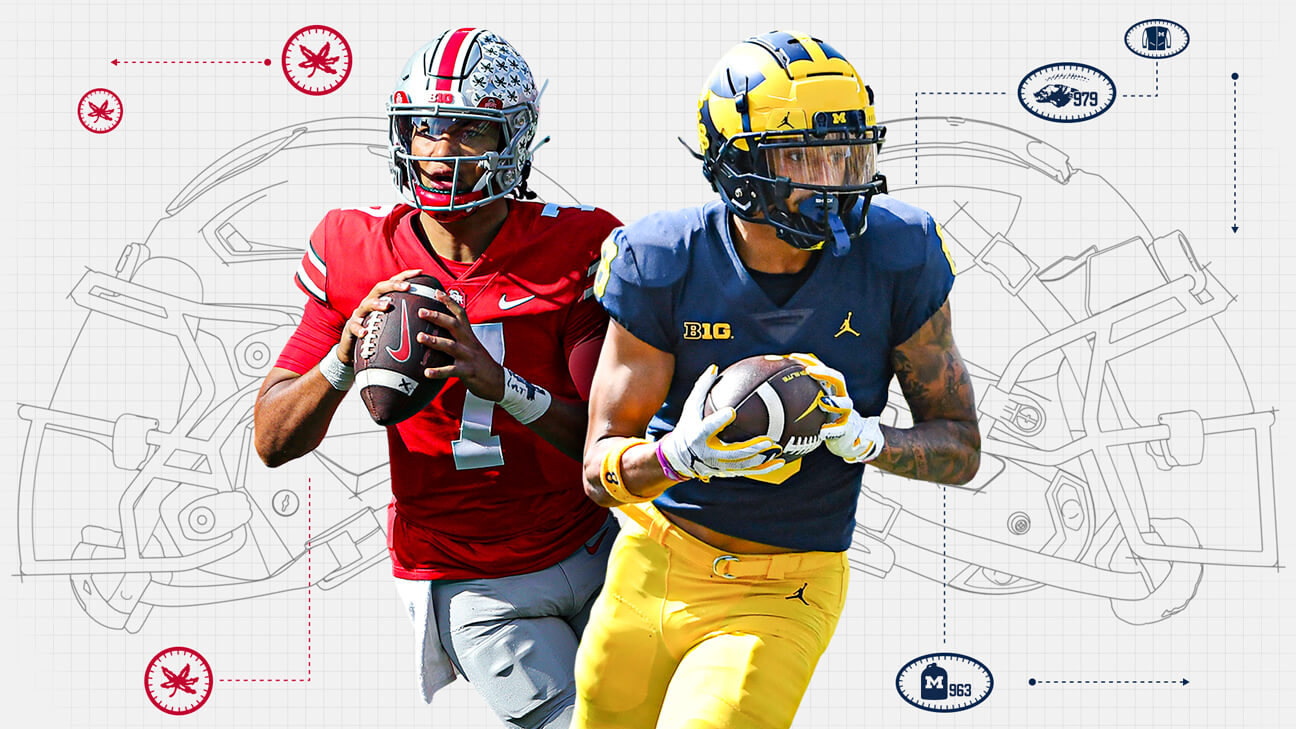
Quarterbacks are often drafted early in the NFL draft because the position is so critical to a team’s success. Teams hope to find a franchise quarterback that can lead them for over a decade. As a result, quarterbacks are usually selected in the first round. In the 2021 draft, five quarterbacks went in the first round including Trevor Lawrence at #1 overall to the Jacksonville Jaguars and Justin Fields at #11 overall to the Chicago Bears.
Drafting a quarterback in the first round carries a lot of risk. First round quarterbacks have high expectations and face intense pressure to perform immediately. However, many struggle in their first few seasons as they adjust to the speed of the NFL. If they do not develop as hoped, they can be considered a “draft bust”. Famous quarterback draft busts include Ryan Leaf, selected #2 overall in 1998 by the San Diego Chargers, and JaMarcus Russell, selected #1 overall in 2007 by the Oakland Raiders. Both were considered franchise quarterbacks out of college but did not find success in the NFL.
Teams try to evaluate quarterbacks thoroughly before the draft, looking at physical tools as well as intangibles like leadership and work ethic. However, performance at the college level does not always translate to the NFL. Quarterback development can take time as rookies learn complex playbooks and adjust to new systems. Teams must decide if drafting a quarterback in the first round is worth the high cost and risk, versus waiting for later rounds or developing a veteran instead.
Salaries
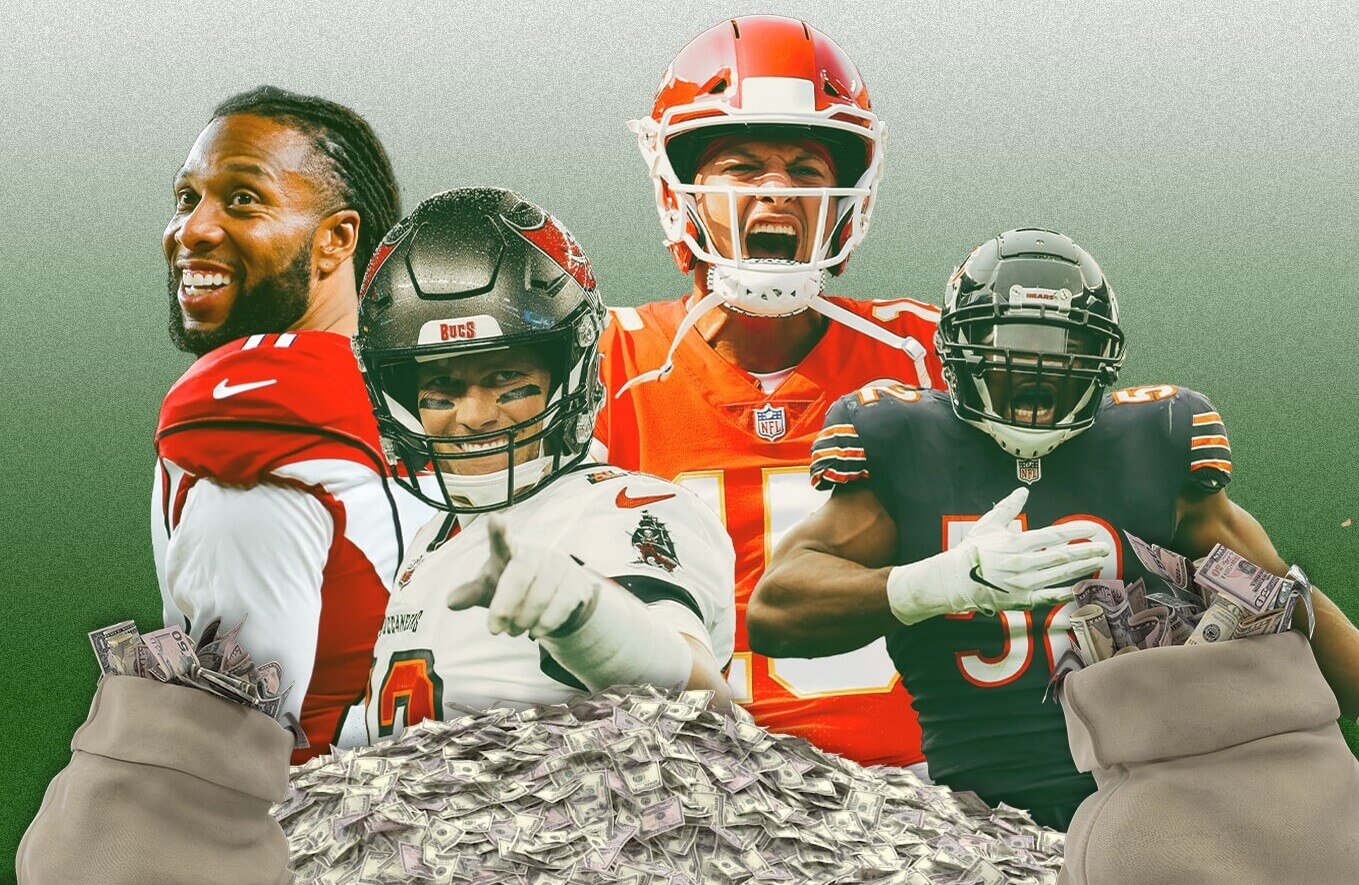
Quarterback is the most important and highest-paid position in the NFL. The salaries for starting quarterbacks have skyrocketed in recent years as teams bid for elite talent.
Some of the highest paid quarterbacks in 2023 include:
- Joe Burrow, Bengals – $55 million
- Patrick Mahomes, Chiefs – $52.65 million
- Justin Herbert, Chargers – $52.5 million
- Lamar Jackson, Ravens – $52 million
- Jalen Hurts, Eagles – $51 million
Average annual salary ranking according to Sportrac.
The salary cap hit is the amount each player counts against their team’s salary cap for that season. This often differs from the player’s actual salary due to how contracts are structured.
Some of the biggest cap hits for 2023 include:
- Patrick Mahomes, Kansas City Chiefs – $37,133,825
- Ryan Tannehill, Tennessee Titans – $36,600,000
- Jared Goff, Detroit Lions – $30,975,000
- Dak Prescott, Dallas Cowboys – $26,832,647
- Lamar Jackson, Baltimore Ravens – $22,150,000
Ranking of average annual limits according to Spotrac.
Rookie quarterback contracts are constrained by the NFL’s collective bargaining agreement. The CBA sets a limit on total value based on draft position.
For example, the #1 overall pick is capped at around $36 million total over 4 years. Quarterbacks drafted later in the 1st round typically earn 4-year deals worth $8-12 million. Signing bonuses make up a large chunk of the guaranteed money.
Statistics

A quarterback’s success is often measured by key statistics like passer rating, passing yards, completion percentage, touchdowns, and interceptions.
The passer rating is a metric that combines completion percentage, passing yards, touchdowns, and interceptions into one number on a scale from 0 to 158.3. It measures a quarterback’s efficiency and production. The all-time highest career passer rating belongs to Aaron Rodgers with 103.1.
Passing yards refer to the total number of yards a quarterback gains through passing completions. Drew Brees holds the record for most career passing yards with 80,358 yards. Tom Brady and Peyton Manning also passed 70,000 career yards.
A quarterback’s completion percentage is the number of completed passes divided by total pass attempts. The highest single season completion percentage record belongs to Drew Brees at 74.4% in the 2019 season. Career-wise, Chad Pennington has the best mark at 66%.
Touchdown passes are one way quarterbacks score points for their team. Peyton Manning holds the career record with 539 touchdowns while Tom Brady surpassed him for the most touchdowns in a single season with 50 in 2007.
On the flip side, interceptions happen when a quarterback throws the ball to the opposing team. Therefore, avoiding interceptions is crucial. Aaron Rodgers holds the record for lowest career interception percentage at only 1.4% of his passes.
By excelling at these key statistics, quarterbacks can lead their teams to victories and make their case as elite players at the position. The very best balance high production and efficiency across these metrics.
Strategies
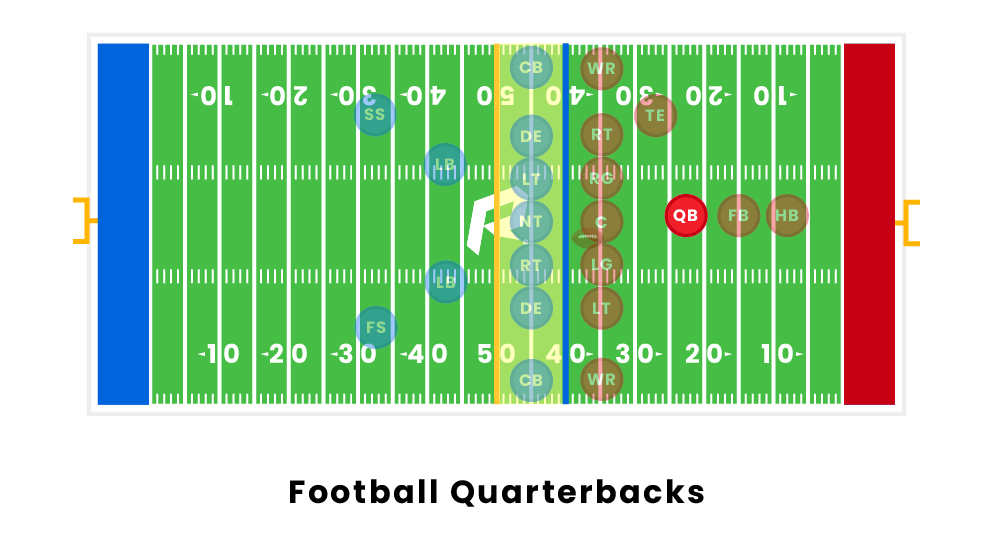
The quarterback position requires mastery of complex offensive strategies and plays. Three key offensive strategies that involve the quarterback are the West Coast offense, the run and shoot offense, and the read option offense.
The West Coast offense emphasizes short, horizontal pass plays to methodically move the ball down the field. This requires precision, accuracy, and good decision making from the quarterback to execute lots of quick, short passes that stretch the defense. Quarterbacks running the West Coast offense read the defense and take what it gives them by distributing the ball to multiple receivers.
The run and shoot offense is all about the passing game. This wide open scheme features four wide receivers and just one running back. The quarterback lines up in the shotgun and must make fast reads to pass to receivers running various routes. Quarterbacks in this offense make lots of pre-snap reads and call audibles at the line of scrimmage. Success depends on having a smart, accurate quarterback.
The read option offense is a run-based scheme that utilizes option plays. The quarterback has the option to hand the ball off to the running back or keep it and run himself depending on how the defense reacts. This requires the quarterback to read defenders and make split-second decisions. Mobility is important for quarterbacks running the read option offense as they may frequently carry the ball and run.
Injuries

The quarterback position comes with a high risk of injury due to the frequent hits and tackles they endure. Two of the most common and serious injuries for quarterbacks are concussions and ACL tears.
Concussions
Concussions have become one of the most concerning injuries in football. The repetitive hits to the head can cause long-term brain damage. Quarterbacks are especially susceptible because they are often hit from the blindside after throwing the ball. Some high profile quarterbacks who have suffered multiple concussions include Steve Young, Troy Aikman, and Aaron Rodgers. The NFL has increased protocols to identify and treat concussions. However, the long-term impacts remain a major worry.
ACL Tears
Tearing the anterior cruciate ligament (ACL) in the knee used to be a potential career-ending injury. But due to improvements in surgery and rehab techniques, ACL tears are now less devastating. Still, they require months of recovery and can impact a quarterback’s mobility. Notable quarterbacks who came back successfully from ACL tears include Tom Brady, Carson Palmer, and Joe Flacco. Proper knee stabilization exercises are critical to help quarterbacks avoid ACL injuries in a sport where knees are vulnerable.
Longevity
With modern medicine and training methods, quarterbacks are often playing into their late 30s and early 40s. But the hits and injuries accumulate over a career. Managing chronic pain becomes crucial to longevity. The increased awareness of concussions has also shortened some careers. Though quarterbacks have a longer shelf life than other positions, their health remains precarious in this high-contact sport. Finding ways to keep quarterbacks protected and healthy is an ongoing challenge.
Conclusion
The quarterback is arguably the most important position in American football. They are the leader of the offense and the player that handles the ball on every offensive play. The quarterback’s main role is to pass the ball to advance it down the field and score points. They need to have strong arms, accuracy, intelligence, leadership skills, and the ability to perform under pressure.
Quarterbacks like Tom Brady, Peyton Manning, Aaron Rodgers, and Patrick Mahomes have defined generations of football with their passing ability and mastery of the game. Teams devote a lot of resources into scouting and drafting the right quarterback prospect because having an elite quarterback is often the difference between a losing franchise and a championship contender. The salaries of star quarterbacks reflect their importance, with contracts regularly going over $30 million per year.


